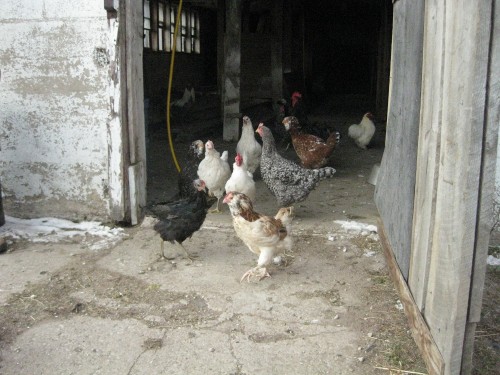These are giant cockroaches. The scientific name is Blaberus giganteus. If you live in or go to Central or South America, you might see these big bugs. They are one of the world’s largest cockroaches. They are about 3 inches long. They live in dark caves in rainforests.
Their wings look like paper. I like their faces and their long antennas.
The cockroaches in these pictures live at the Bugs Alive! exhibit at Milwaukee Public Museum. We took these pictures on October 29 this year.
















 RSS Feed
RSS Feed Facebook
Facebook Twitter
Twitter Subscribe by e-mail
Subscribe by e-mail